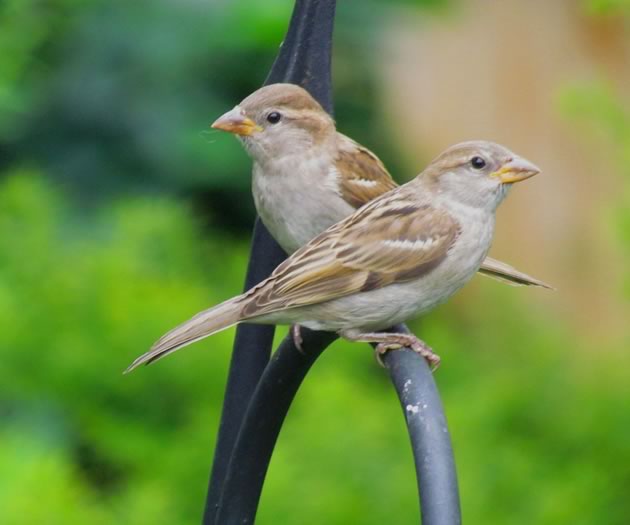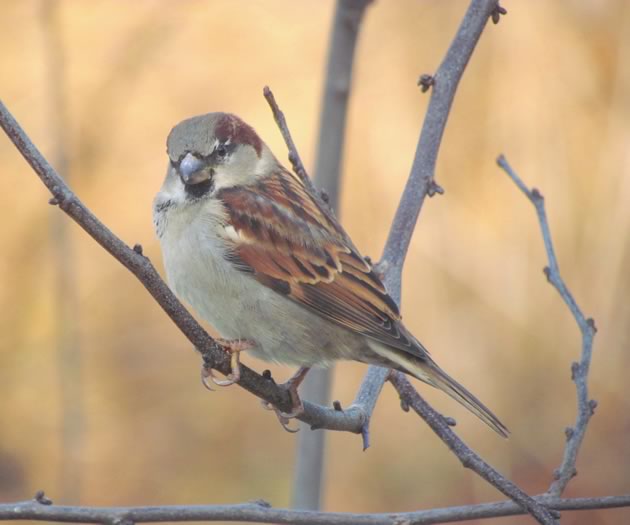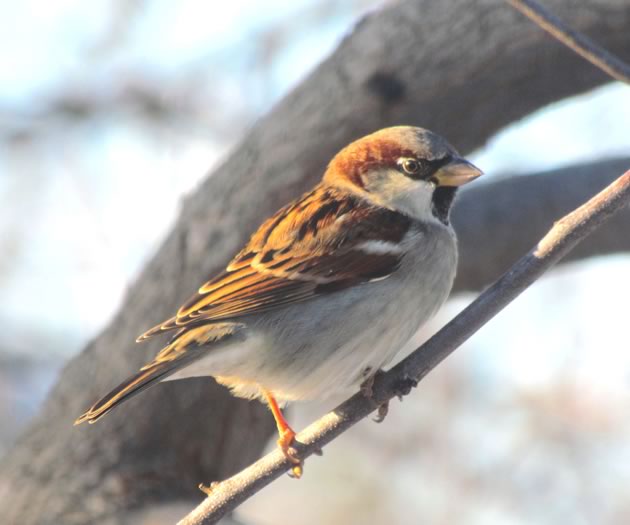House Sparrows
House sparrows may now be the most abundant and widespread bird on Earth, occupying every continent except Antarctica.
Arthur Cleveland Bent was perhaps the foremost North American ornithologist (bird expert) of the early 20th century. When he was a boy in Massachusetts in the late 1860s and early 1870s his love of birds was nurtured by an uncle who lived next door. His uncle enjoyed wild birds but also raised captive sparrows imported from Europe.
The uncle’s sparrows multiplied quickly, were eventually set free, and immediately began taking over the neighbourhood by aggressively evicting native birds like wrens, swallows and purple martins from their nest sites.
Too late Bent’s uncle realized his mistake. The feathered genies couldn’t be coaxed back into the bottle. They would go on to conquer almost the entirety of the Western Hemisphere, reducing native bird populations in their wake.
To be fair, Arthur Cleveland Bent’s uncle cannot be held solely responsible for the house sparrows’ introduction. Many other people also released them, often motivated by sentimentality; house sparrows reminded them of home. Others thought the sparrows might help control insect pests.
House sparrows may now be the most abundant and widespread bird on Earth, occupying every continent except Antarctica. If they have an Achilles’ heel, it may be their utter dependence on us. If a plague wiped out the human population of the planet, house sparrows would likely disappear soon after.
They thrive only where we do, feeding on our grain and backyard bread crumbs. The various cavities we inadvertently create, offer them housing. They build nests in light standards along roadways, for example. At my school they nested every year in the hollow beam of a metal gate and grew fat on the chips, popcorn and cookie crumbs dropped by students in the schoolyard.
In the past, house sparrows had an arguably healthier diet, albeit a messy one. When horses were the primary source of transportation, they fed happily on partially digested grain in the road apples the horses left behind.










Interesting observation Pam! Your comment led me to look into house sparrow decline on the web. I was astonished to find out that they are considered a threatened species in Britain – a country where they are a native bird. There the problems may be a decline in insects and a lack of deciduous shrubbery that the sparrows use for shelter and foraging. Some people are encouraging nesting sparrows in Britain by incorporating special bricks into the structure of their houses, that offer cavities for nesting!
Here house sparrows are in better shape, for better or worse. The decline in “your” sparrows may be merely temporary – they may return in numbers next year. If they don’t, perhaps it’s because of insufficient insects in your neighborhood, as seems to be the case in Britain. Even though adult house sparrows primarily eat seeds, their young need bugs. Declining insect populations are one of the reasons many of our songbirds are decreasing. While many insects can be found in our cities and towns, they aren’t found in sufficient numbers to support many species of birds.
Don Scallen on Jun 27, 2015 at 4:28 pm |
I have lived in Thorold for over 15 years and during that time house sparrows have raised 3 sets of babies in my porch roof each summer. When all the sparrow babies are left to manage on their own they have congregated in two or three dozen as they forage for good etc. This year the porch sparrows started raising their babies and for some reason they disappeared. Also absent are the noisy congregation of young sparrows. I see only the occasional sparrow. Does anyone have an answer as to why this might be?
Pam Nye from Thorold, Ontario on Jun 26, 2015 at 12:26 pm |